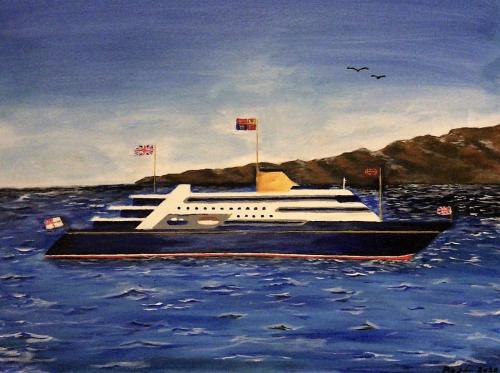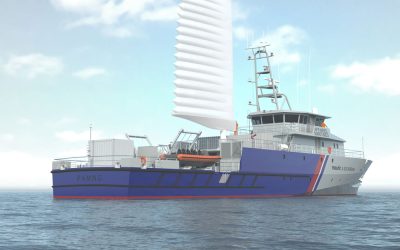Although not specifically designed for the role, Britannia excelled in promoting business, invariably due to the cachet of holding the meetings on the royal yacht with the State Drawing Room, Ante Room and Dining Room being used when the royals were not onboard. However, arrangements were limited by overnight accommodation not being offered. In the final years of Britannia’s service, trade deals worth tens and even hundreds of millions were concluded each day she was used in her promotional capacity.
It is worth noting that previously I mentioned that Britannia’s success was largely due to her being “the Royal Yacht”. Ceremonial and State visits, State dinners and receptions and the Band of the Royal Marines all worked to provide the allure and imbue Britannia with the required cachet – and this must be replicated on any new yacht. But these attributes need to be expanded to include all the facilities required to rigorously promote business and trade; a conference auditorium with break-out room, an exhibition hall, dedicated meeting rooms and a business centre. After all, why would business meetings and conferences be held onboard the confines of a yacht when better facilities could be found on shore?
On 29 May this year, HM Government announced that a new ‘National Flagship’ was planned at an estimated cost of £200 million and an illustration of a two-masted vessel was released depicting how the ship might look. Although details were scant, it was announced that the ship would be crewed by the Royal Navy and would be in service by 2026. With only two masts, this vessel can’t be classed as a ‘Royal Yacht’ in the traditional sense as three masts are required. If the illustration is accurate, it’s also unlikely that it would be of sufficient size to simultaneously host conferences, exhibitions and receptions of any significant size.
Notwithstanding international capabilities on designing and building large yacht-like vessels, as befits the UK ‘National Flagship’, the design of this ship from concept design through to detailed design should showcase British capabilities. This was clearly endorsed by Prime Minister Boris Johnson who stated: “Every aspect of the ship, from its build to the businesses it showcases onboard, will represent and promote the best of British – a clear and powerful symbol of our commitment to be an active player on the world stage.”
Building such a vessel in itself would be welcome work for any UK shipyard. Cammell Laird cut its teeth on the recent Sir David Attenborough, but what better shipyard group to launch this ship than Harland & Wolff, brought out of administration and revitalised by Infrastrata? In conjunction with British design and as much British equipment and innovation as possible, the yacht would be an international showcase for all things British Maritime.
In the last years of her commission, Britannia was costing around £12 million per annum to operate, refits excepted. Surprisingly, the running costs of Britannia were met entirely by the Royal Navy/Ministry of Defence, and the Home and Foreign Offices, whilst businesses using the yacht did so complimentarily. It is clear, in 2021, any new yacht project must be as far as practicable self- financing to not unduly rely on the public purse and the Exchequer.
The author believes we need a true national flagship. A ship able to pay its way with full-scale exhibitions and conferences as found ashore, an onboard Embassy with a diplomatic mission, a trade suite and meeting place for businesses large and small, elite sports people and youth – promoting trade, tourism and culture and still have the space for the signature State and Royal Apartments that would give the ship its true status. We are a maritime nation and the leaders and innovators who have defined our nation in the past wouldn’t expect anything less.
About the author
Stephen Payne is a former President of RINA and is the Designer of Cunard Line Queen Mary 2, a Royal Designer for Industry and a finalist of Prince Philip’s Designers Prize 2006. He was awarded the Royal Academy of Engineering Special Achievement Award 2006.
The full version of this article can be found in the June 2021 edition of The Naval Architect.




